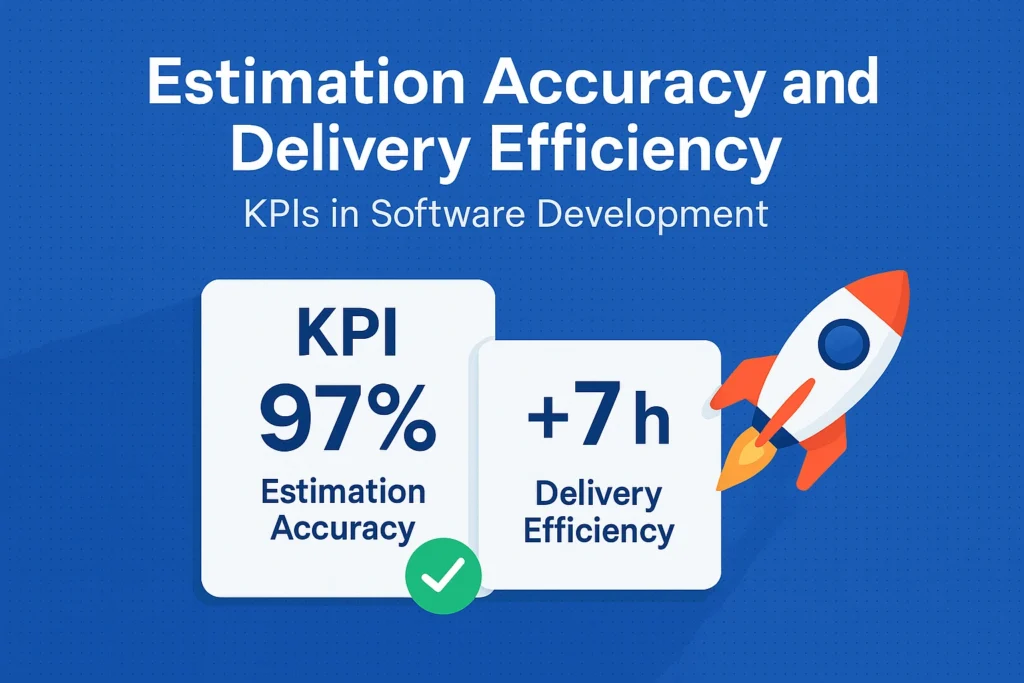Artificial intelligence (AI) is changing how businesses work. AI can help automate tasks, make better decisions, and improve efficiency. As technology becomes more important in business, using AI is becoming essential.
One of the biggest benefits of AI is increased efficiency. AI can do routine tasks like data entry or answering customer questions. This frees up time for employees to do more important work, which leads to higher productivity and better customer service.
AI is also great at handling large amounts of data quickly and accurately. This helps businesses make informed decisions faster. This not only speeds up decision-making but also reduces errors that can be costly or harm customer satisfaction.
Staying ahead of competitors is another important reason to use AI. By using the latest technology, businesses can respond faster and better to customer needs and market changes. This gives them a competitive advantage that helps attract and keep customers.
Using AI in your workflow requires careful planning and execution. You need to understand your specific business needs, choose the right AI tools, and make sure they work well together to achieve your goals. This guide will help you integrate AI into your business workflows effectively.
Step 1: Identify Your Goals
The first step in integrating AI into your workflow is to clearly define your goals. What do you aim to achieve with AI—whether it’s boosting efficiency, enhancing accuracy, or addressing other specific needs? Once your goals are set, you can start planning how to adapt your workflow to incorporate AI.
Next, prioritize your goals from most crucial to least. If you plan for a gradual implementation, tackling goals in order of importance will help manage the process effectively. Consider factors such as the criticality of each process, the cost-effectiveness of the changes, the time required for implementation, and any other relevant factors.
After establishing your goals, assess your current workflow. Evaluate existing processes for efficiency and identify areas where AI could bring improvements. Consider potential challenges and obstacles that might arise during the AI integration. This analysis will guide you in selecting the most suitable AI solutions for your needs.
Step 2: Analyze Your Current Workflow
To enhance the efficiency and accuracy of your business operations using AI, it’s crucial to follow a structured approach. AI can automate routine tasks such as data entry and customer service interactions, and offer more precise predictions from large datasets.
Start by analyzing your current workflow to pinpoint where AI could be beneficial. Examine each task and ask:
- Is this task time-consuming?
- Could AI technology automate this task?
- Are there potential errors in this process that AI could address?
After identifying potential areas for AI integration, determine which type of AI technology would best meet your needs. For instance, natural language processing (NLP) might be ideal for automating customer service, while machine learning algorithms could enhance predictions from large data sets.
Consider if existing systems and processes need adjustments to incorporate new AI technologies seamlessly, without disrupting other operations. Ensure that all changes comply with industry regulations and standards to avoid future compliance issues.
Begin testing various AI solutions by running simulations with sample data, experimenting with different configurations, and fine-tuning parameters. This phase is about exploring options and finding the right fit for your business, rather than making final decisions.
Step 3: Choose an Appropriate AI Solution
Implementing AI in your business can be a complex process, requiring careful planning and consideration. Here’s a guide to help you choose the right AI solution:
- Cost: Assess the cost of each AI option, including any additional fees. Ensure your budget aligns with the costs to avoid overspending or underinvestment.
- Scalability: Evaluate if the AI system can scale with your business needs. It should handle increased data and user demands without significant performance issues.
- Ease of Use: Consider how user-friendly the AI solution is. Extensive training can be costly, so choose a system that minimizes the learning curve and is intuitive for users.
- Compatibility: Check if the AI solution integrates well with your existing systems and infrastructure. Ensure that any required hardware or additional components are compatible and necessary.
- Integration Issues: Be aware of potential integration problems with other platforms. Some solutions work better together, so consider how different systems will interact.
After gathering all relevant information, select the AI solution that best meets your objectives within your budget.
Invest in training for employees to ensure effective use of the new tools. Conduct regular audits to monitor performance and make necessary adjustments to maintain productivity. Document the implementation process, including successes and challenges, for future reference and continuous improvement.
Step 4: Implement the Solution
Once you have chosen the best solution for your problem, integrating it into your workflow can seem daunting, especially if it involves modifying existing systems or processes. Here’s how to manage this transition effectively:
- Communicate with Stakeholders: Ensure all relevant parties understand the reason for the change and the benefits it will bring. Clearly outline any potential risks and emphasize the positive outcomes expected from the successful implementation of the new solution.
- Provide Clear Instructions: Offer detailed guidance on how each stakeholder should adjust their current processes or systems to accommodate the new solution. This helps prevent confusion and ensures a smooth integration.
- Implement Gradually: If feasible, start with small-scale tests before a full rollout. This approach allows you to identify and address issues early, minimizing disruption and saving time and resources.
- Prepare for Challenges: Be aware that even well-planned solutions might face unforeseen problems during implementation. Allocate resources for troubleshooting and fixing issues as they arise, rather than focusing solely on other tasks.
- Document the Process: Keep detailed records of each step taken during the implementation process, including who was responsible for what and key milestones. Regular check-ins and progress tracking help maintain transparency and ensure deadlines are met without compromising quality.
By following these steps, you can ensure a smoother transition and maximize the benefits of your new AI solution.
Step 5: Monitor Performance
Monitoring the performance of a new solution is crucial for ensuring it meets its objectives and continues to deliver value. Here’s a structured approach to effectively monitor and maintain your AI solution:
- Set Up Automated Alerts: Implement systems that automatically notify you when key metrics, such as accuracy rates or processing speeds, fall below predetermined thresholds. This proactive approach helps catch potential issues early and reduces the need for constant manual oversight.
- Track Customer Feedback: Regularly collect and review feedback from users to gauge their satisfaction with the solution. Surveys and feedback forms can provide insights into usability issues and areas for improvement, helping you enhance both the technical performance and user experience.
- Analyze Usage Data: Monitor how frequently and in what ways users engage with different features of your solution. Understanding usage patterns allows you to prioritize updates and improvements based on actual needs and behavior, rather than assumptions.
- Run Tests Regularly: Conduct routine tests to verify that the solution operates as expected. This includes checking for bugs, verifying new features, and ensuring overall functionality remains intact. Regular testing helps prevent issues from arising unexpectedly.
- Review Reports and Logs: Analyze reports and logs for detailed information on the solution’s performance, including progress toward goals and any risks or problems encountered. This documentation is valuable for debugging and improving the system.
- Adjust as Needed: When discrepancies between expected and actual results are identified, make necessary adjustments to address issues and optimize performance. Continuous improvement based on data and feedback helps maintain the solution’s effectiveness over time.
By following these steps, you can ensure that your AI solution remains efficient, effective, and aligned with your business goals.
Pitfalls to Avoid When Changing Your Workflow
When integrating AI or making significant changes to workflows, several pitfalls can undermine success:
- Inadequate Assessment of Current Processes: Before making any changes, it’s crucial to evaluate your current workflows thoroughly. Identify what’s working well and what needs improvement. This assessment helps focus efforts on areas that need attention and ensures a more targeted approach to implementing new solutions.
- Insufficient Planning: Rushing into changes without adequate planning can lead to unforeseen issues, delays, and costly rework. To avoid these pitfalls, allocate sufficient time to develop a detailed plan that outlines each step, including contingencies for potential setbacks.
- Communication Breakdown: Effective communication among stakeholders is vital. Misunderstandings and lack of clarity can lead to confusion and hinder progress. Ensure that roles and responsibilities are clearly defined and that there are established channels for information flow throughout the implementation process.
- Overloading with Multiple Changes: Trying to implement too many changes at once can overwhelm staff and reduce overall productivity. Break down tasks into manageable chunks and focus on one change at a time to avoid burnout and ensure smoother transitions.
- Neglecting Training: Introducing new tools and techniques requires proper training. Without ensuring that employees are adequately trained to use new systems, the effectiveness of the implementation can be compromised. Invest in training to help staff adapt and maximize the benefits of new technologies.
By being mindful of these common pitfalls and addressing them proactively, you can improve the chances of successful AI integration and workflow optimization. Creating a well-thought-out plan, ensuring clear communication, and supporting your team through training will help navigate the challenges and leverage AI effectively to enhance your business processes.






